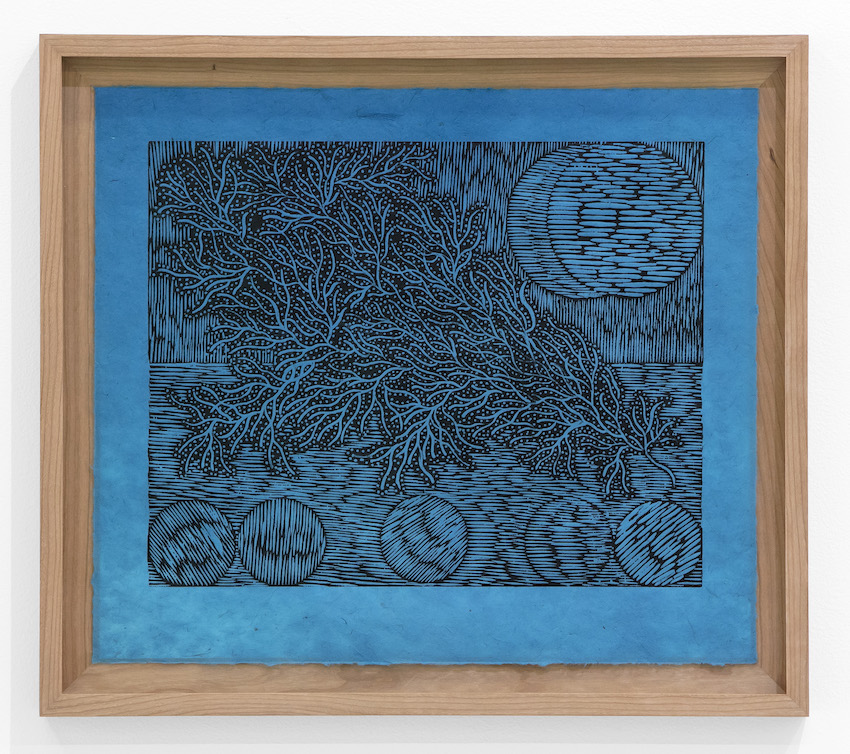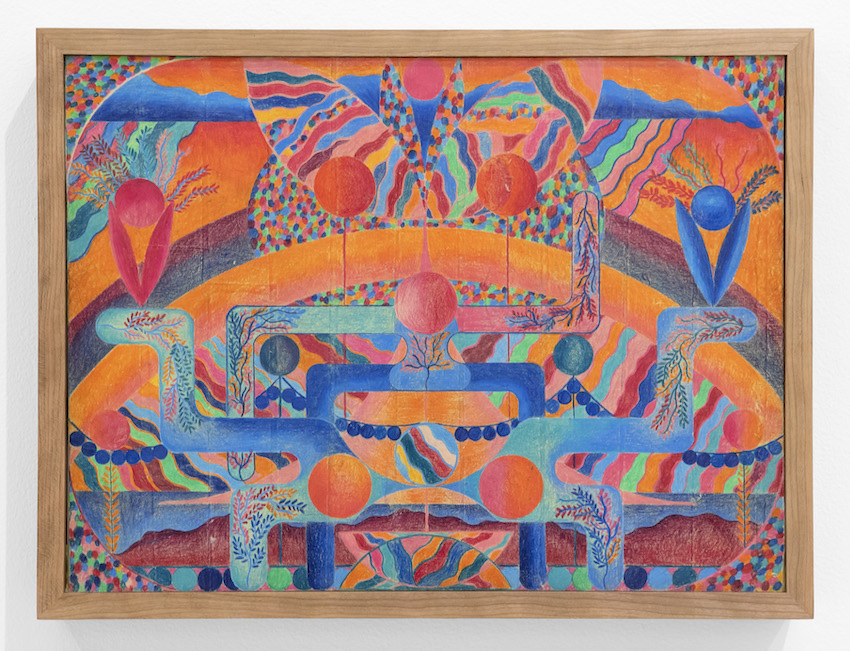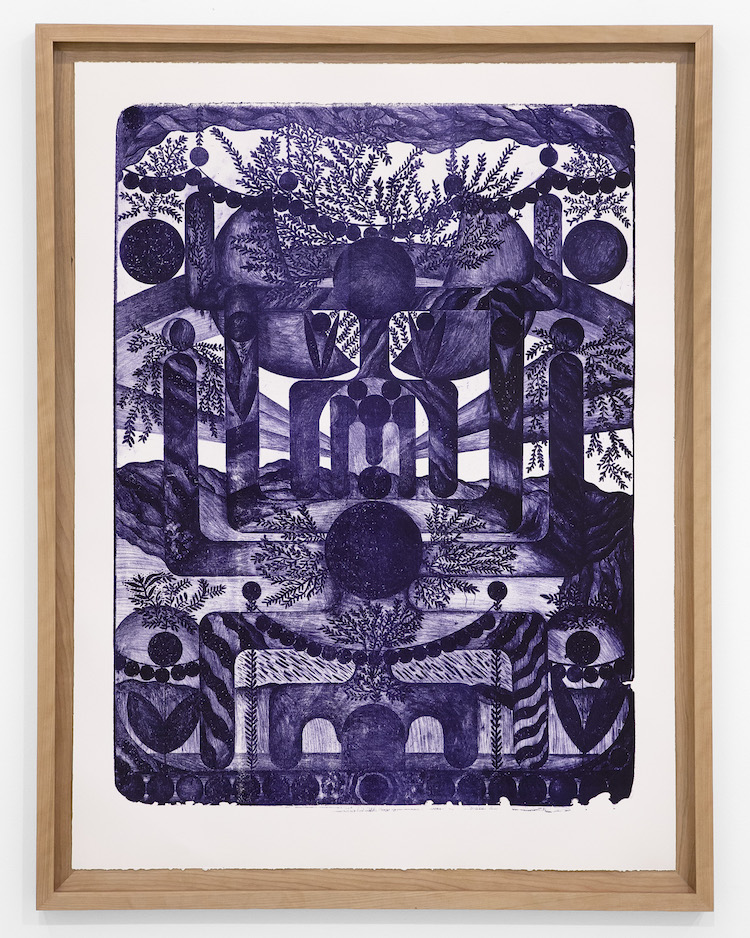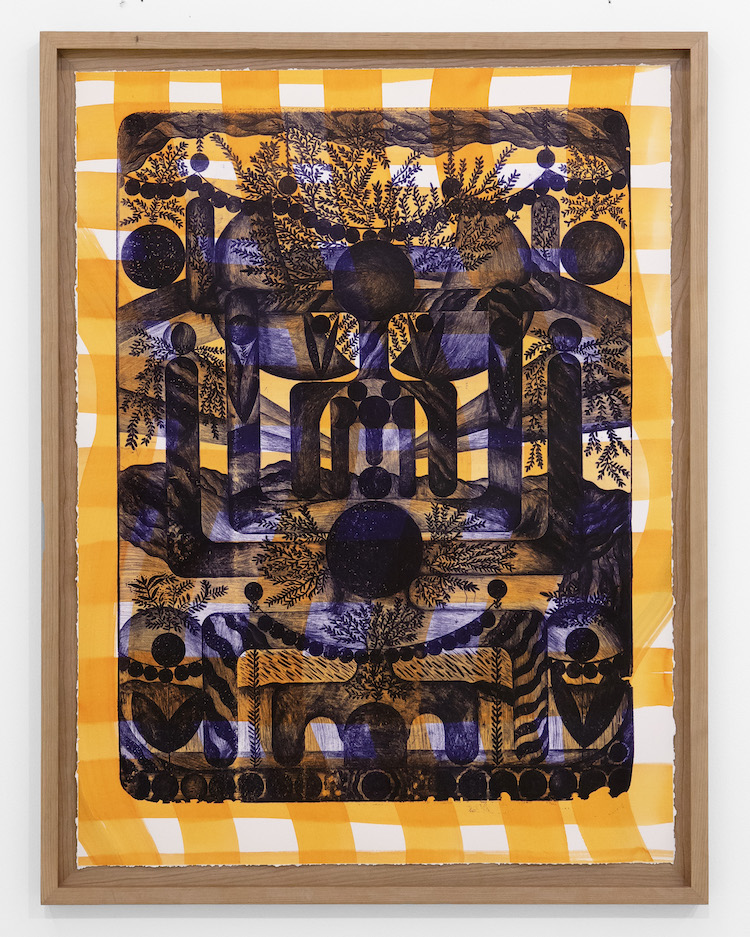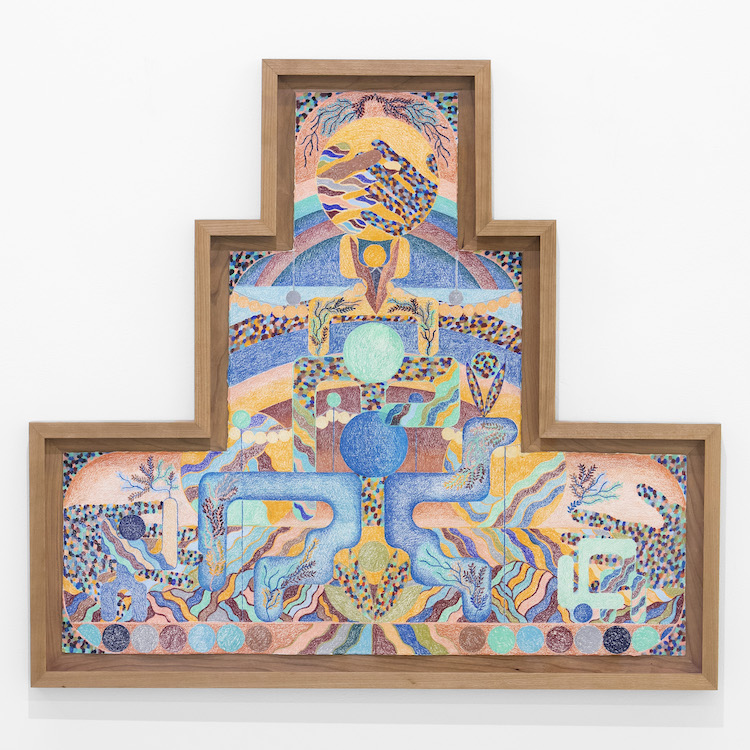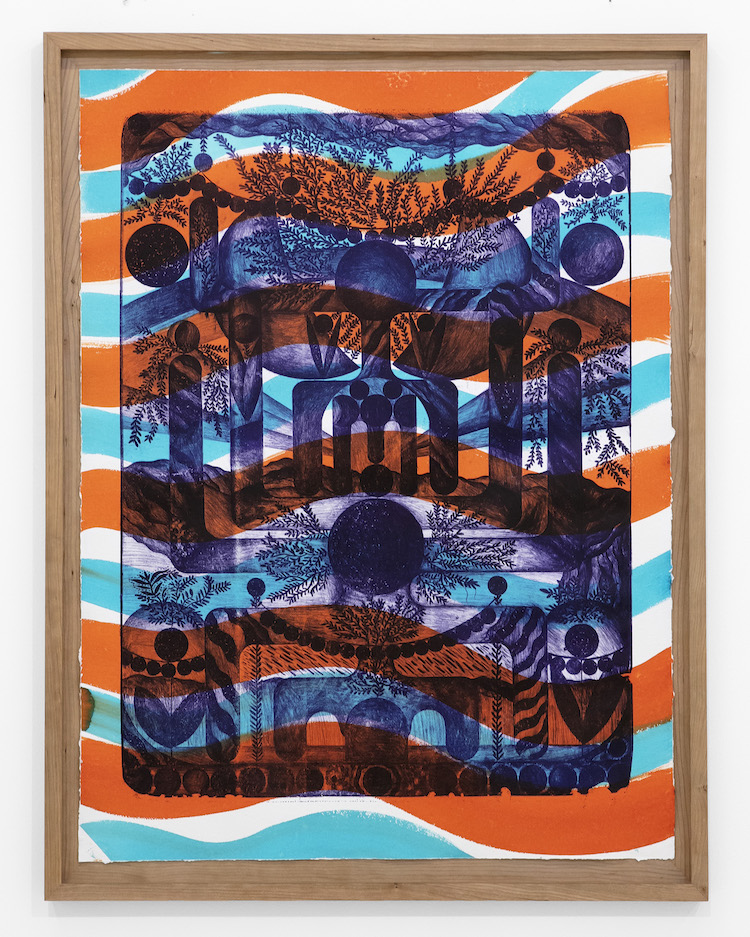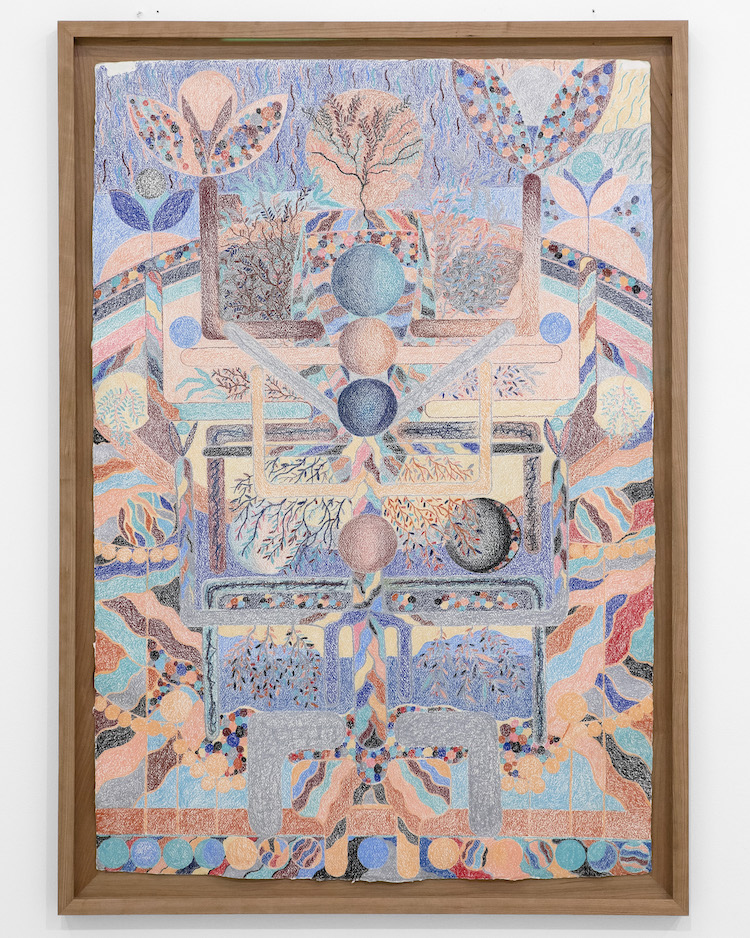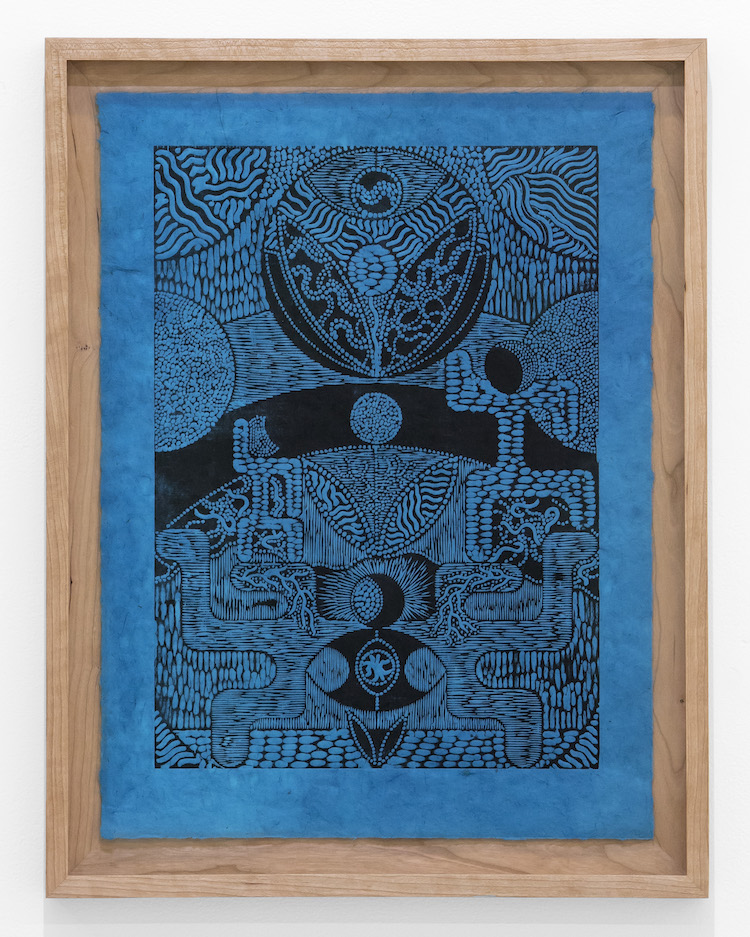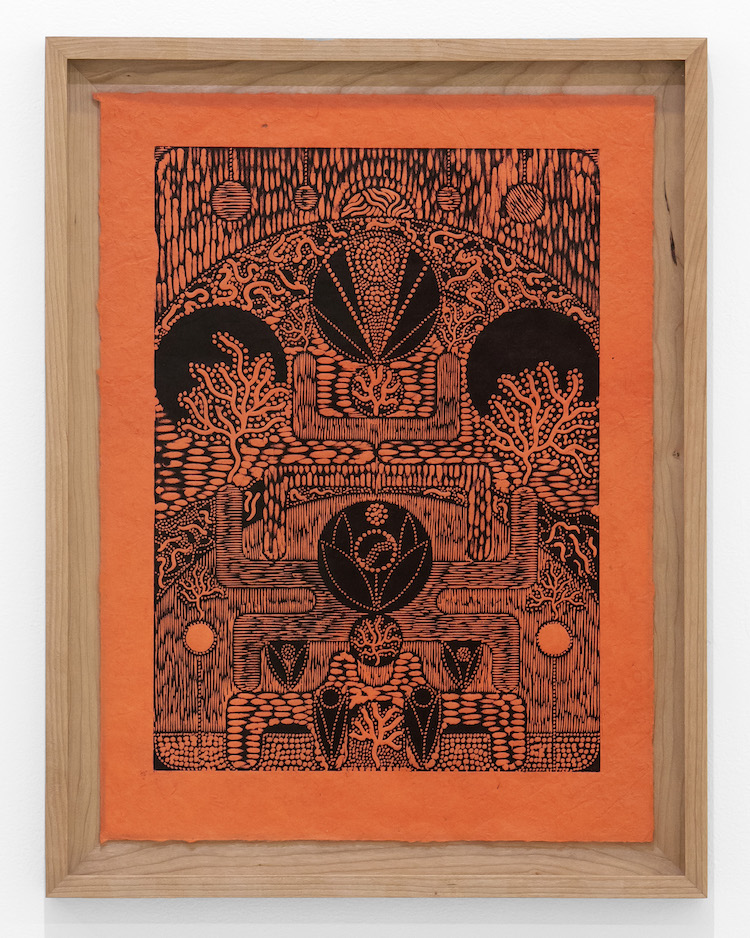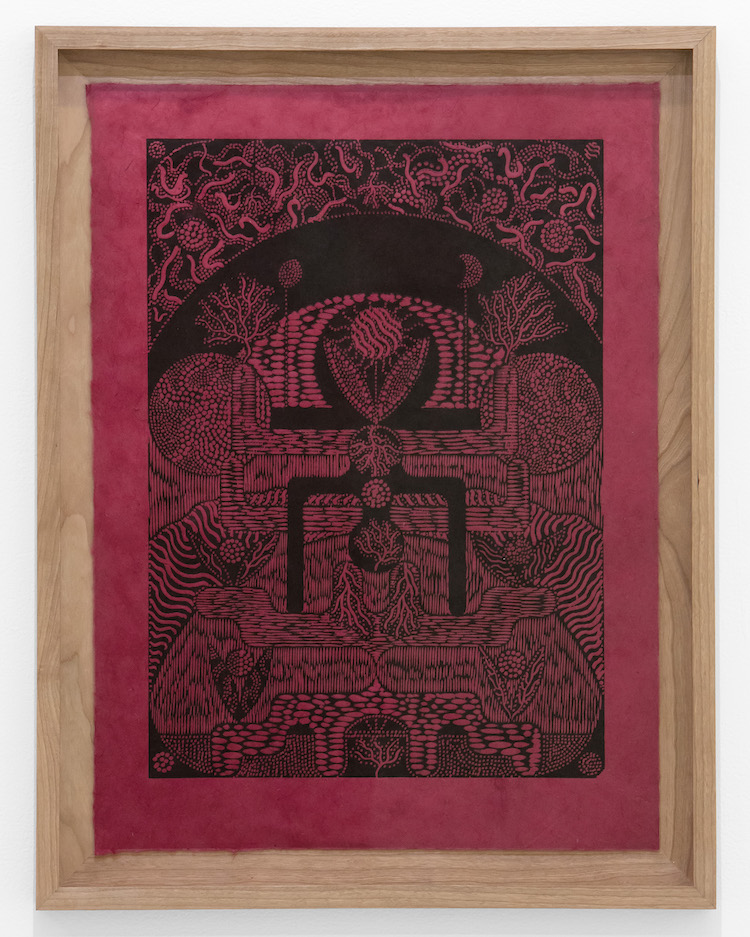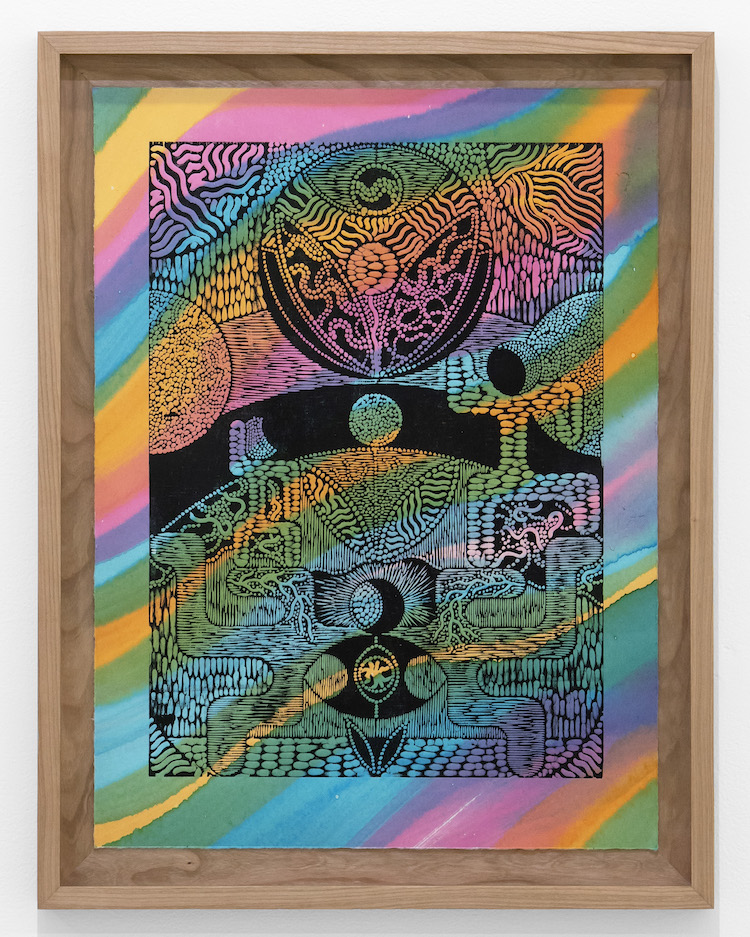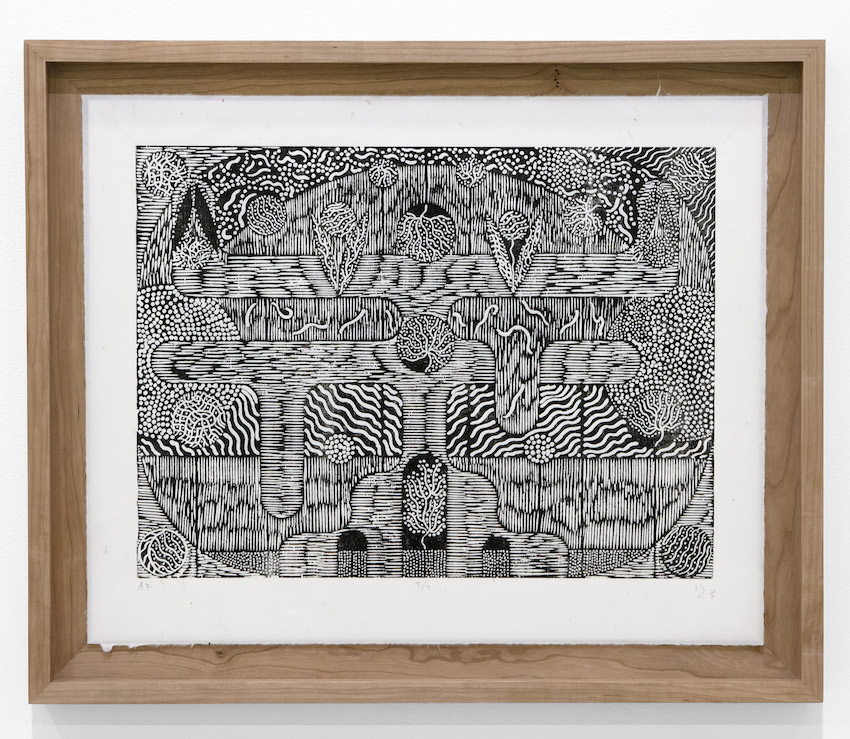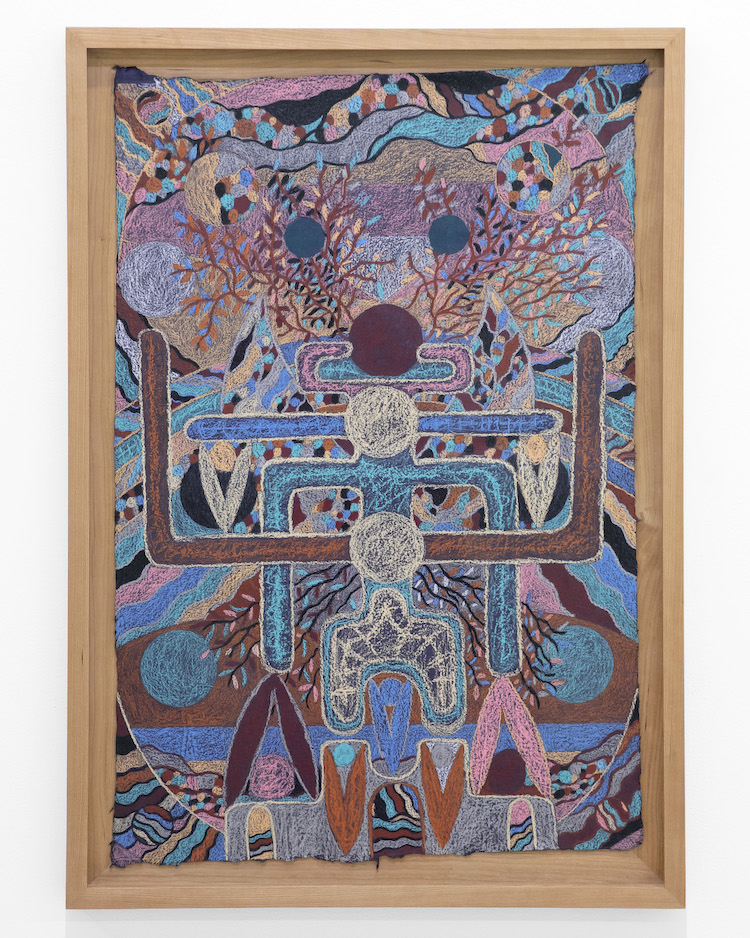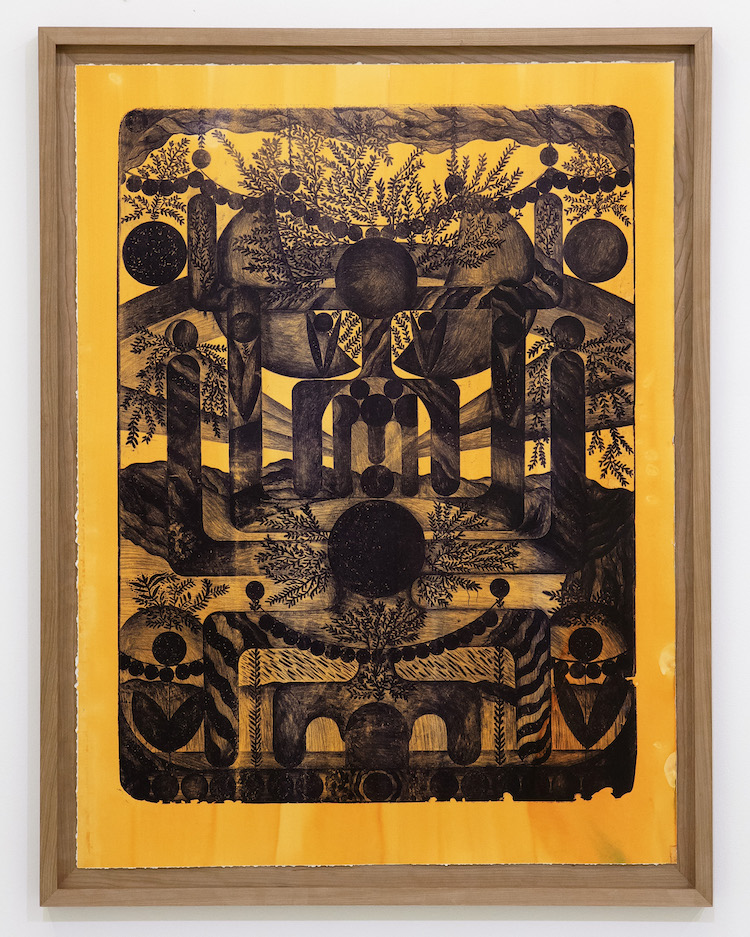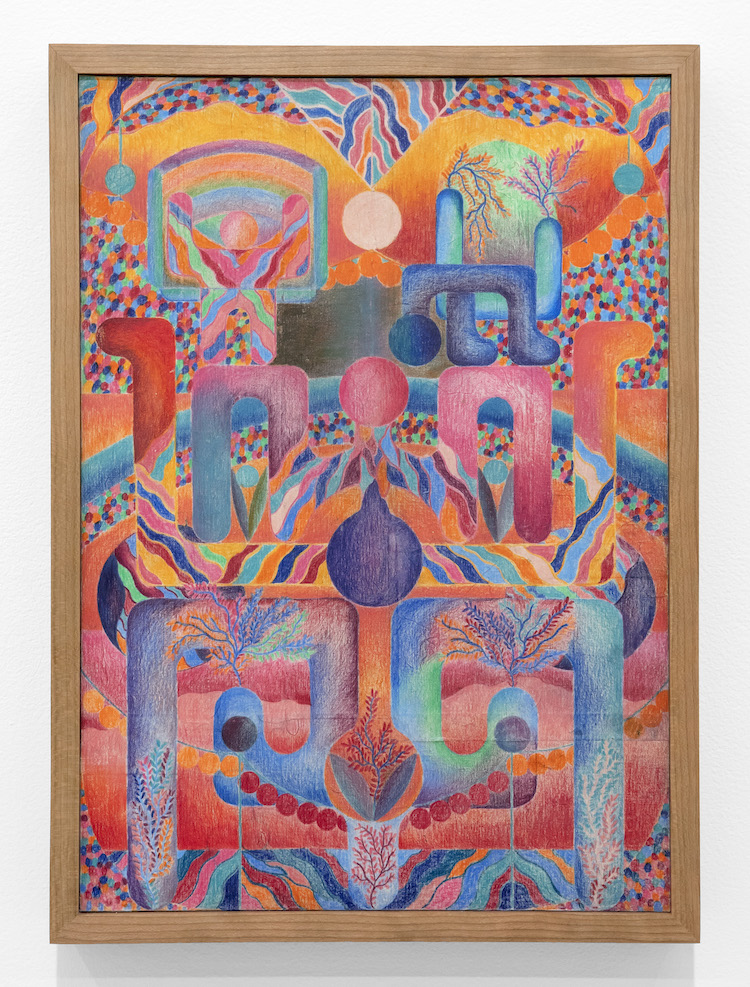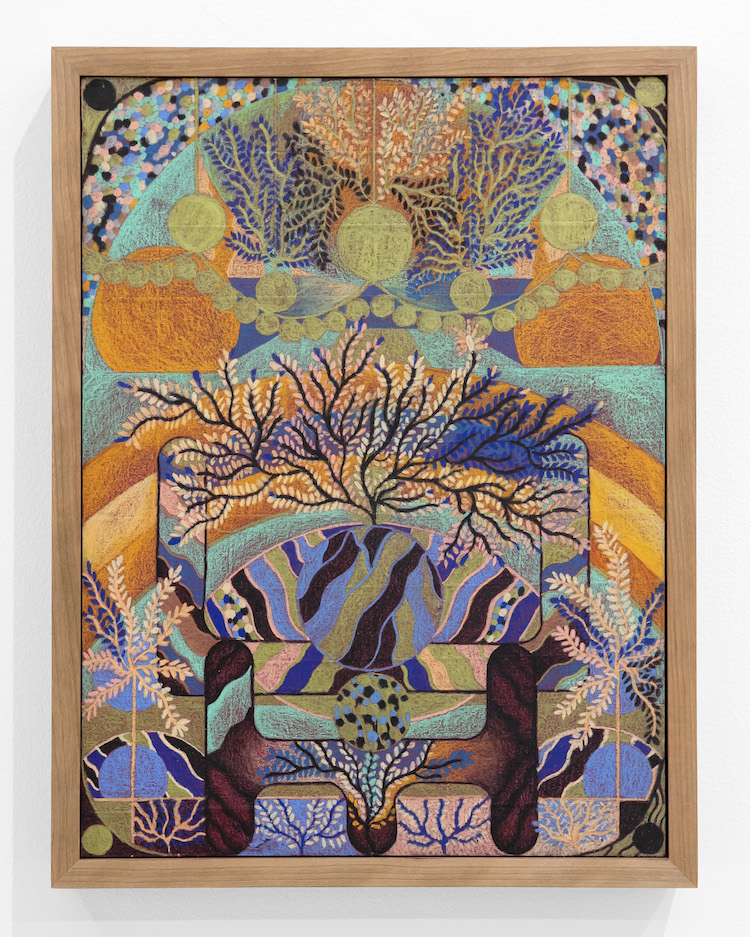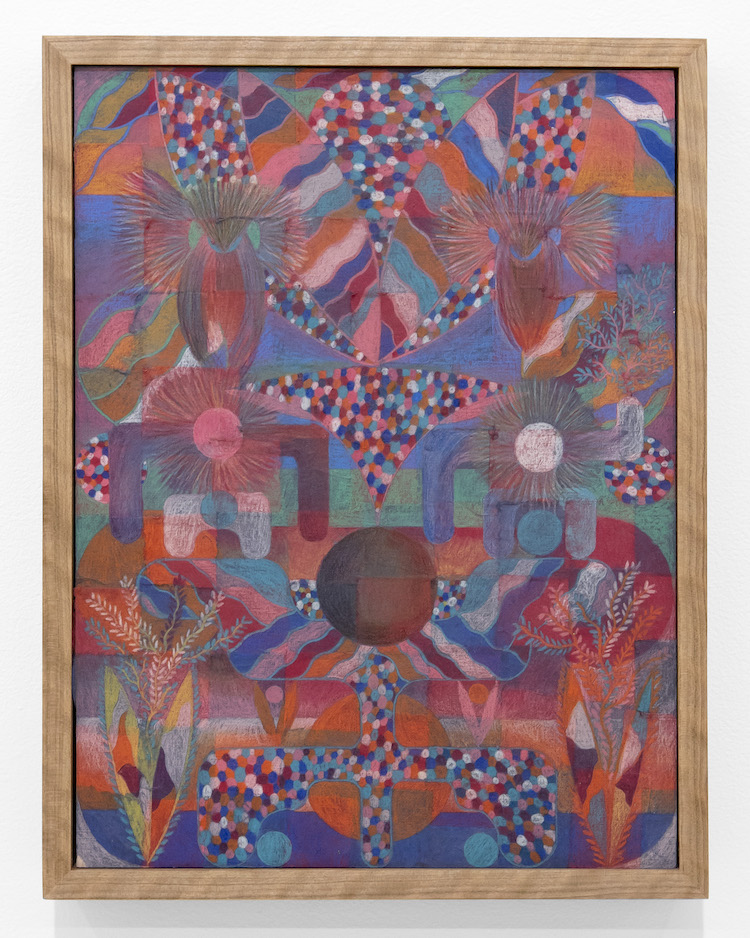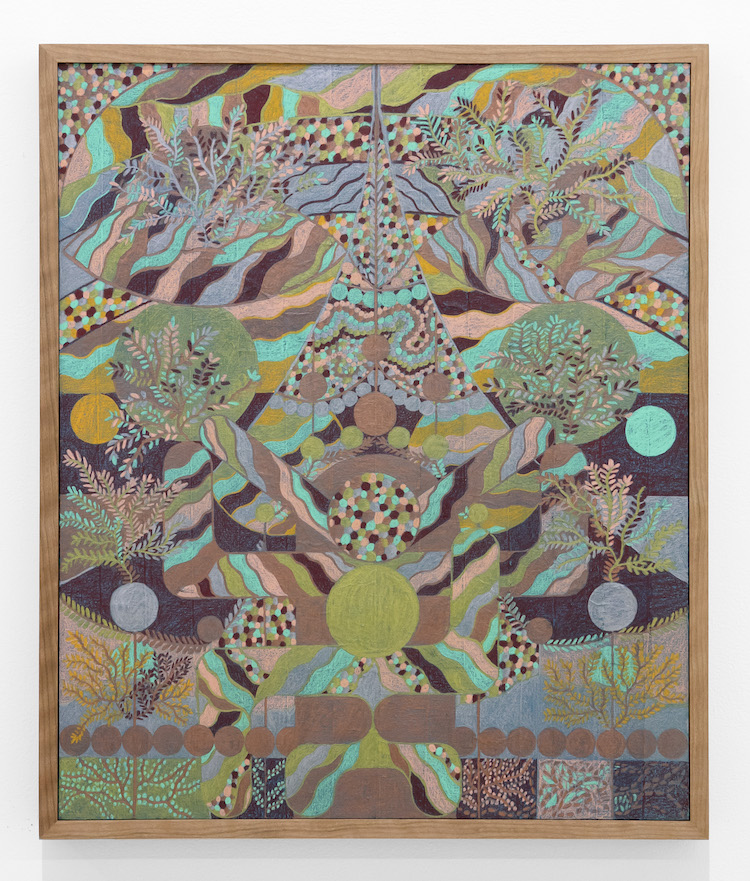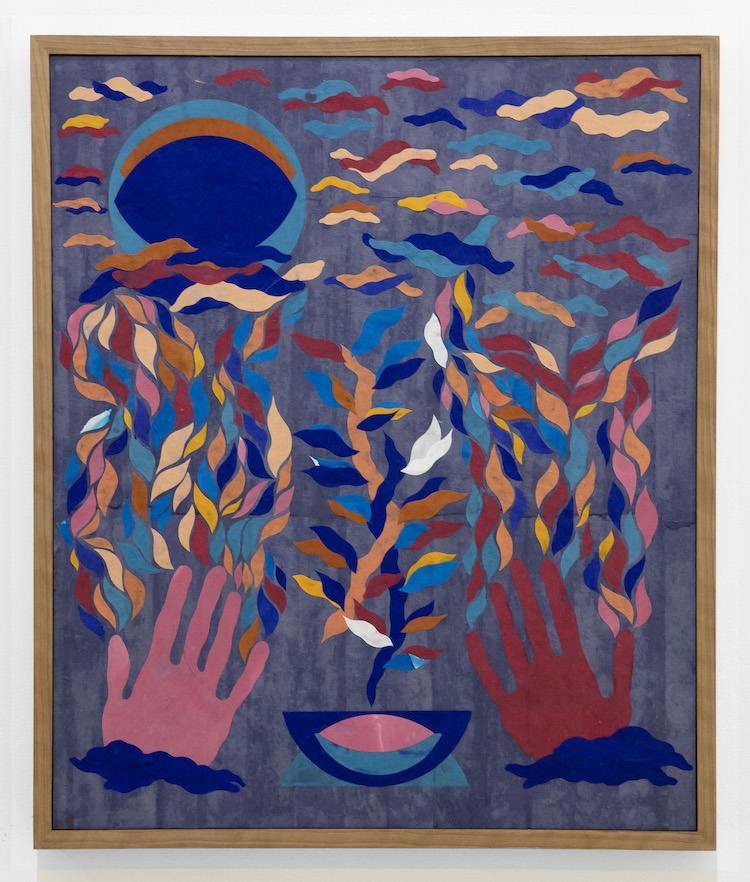Imagine an alphabet of bodies. In Anton Funck’s latest solo show, on view at pt.2 Gallery starting September 15, the artist zooms in on his previous questions about experience and existence, through his detailed works including oil pastel on cotton paper, lithographic and wood cut prints on hand dyed cotton rag, kozo and washi paper, crayons, as well as collage on plywood. This meticulous presentation of works demonstrates the artist’s observation of our different sides, both physically and mentally, our happiness and our neuroses, our physical being, and the changes we experience over time. We have complex inner worlds in common, and we each house multiple beings at once, that are ever-changing, all the time. The works are consistent in size with a collection of smaller works, reflective of the artist's physical limitations in producing the pieces, and varying in shape and materiality. This reflects what Funck sees as a list, a dictionary, for his Alphabet of Bodies.
Funck’s personal experience with anorexia has shaped his thoughtful observations of the world, in his ability to see from multiple perspectives. Those perspectives influenced by illness, and those that in more peaceful moments, wish to break away from painful cycles and create new ones. As Funck has been grappling with his recovery and relapse in the months leading up to this exhibition, the show focuses on how difficult it is to release the sides of ourselves that feel like part of us, a limb, or someone we lean on. Leaving wounds in us that take a long time to heal once removed.
Funck’s exploration of being, and the pain and turbulence associated with this in different stages of his own human experience, is vividly represented in this show, with the artist’s use of figure throughout the works, as well as his familiar and purposeful use of colour.
There is you, here right now, experiencing moments, moments that will become memories to study. Funck considers the versions inside us and the possibilities for what we might become as our future selves, sorting through memories and his experience of time, to ask the questions - Who is really living there, inside you? How many versions of you are there? —Damai Syarifuddin



